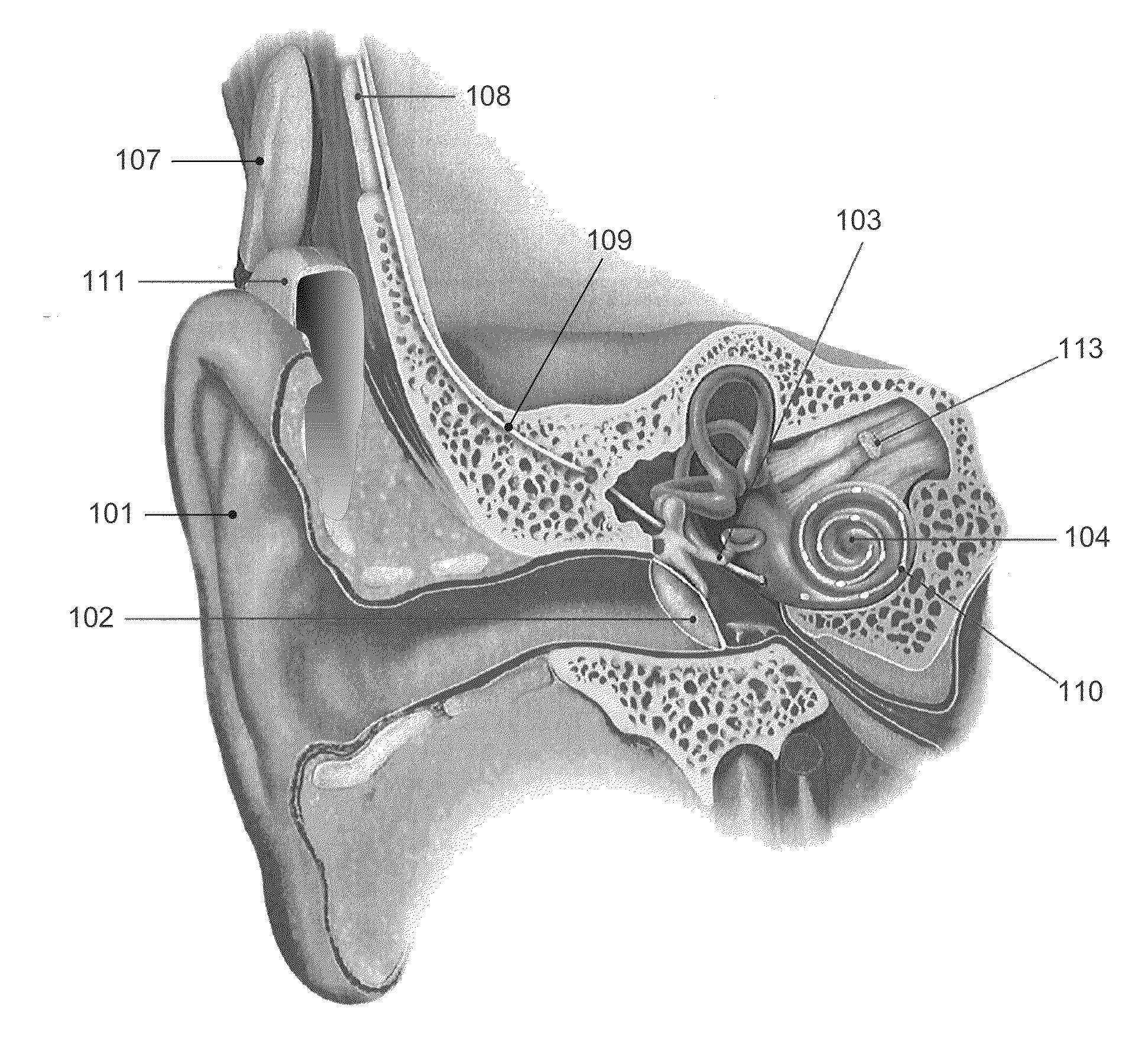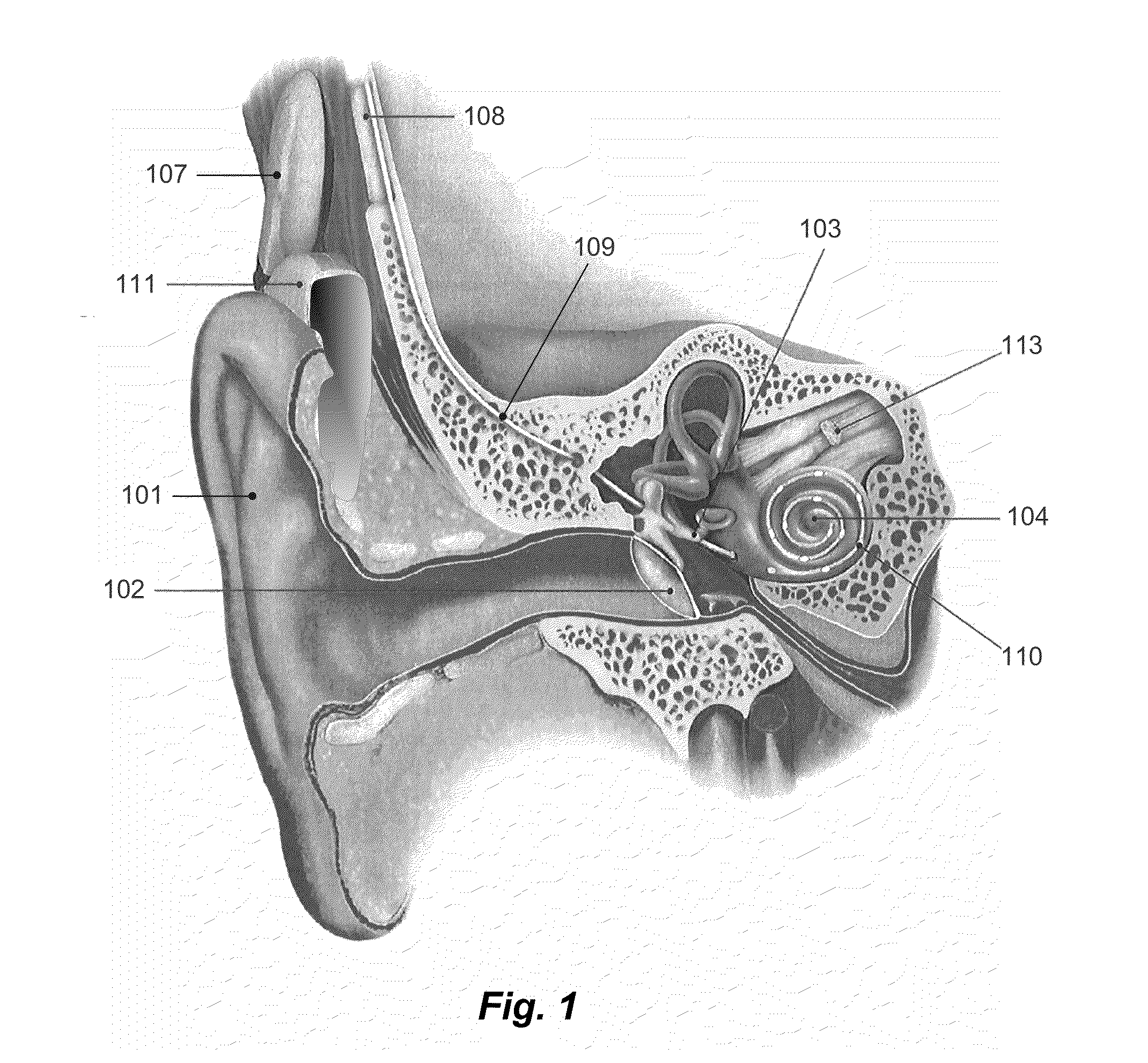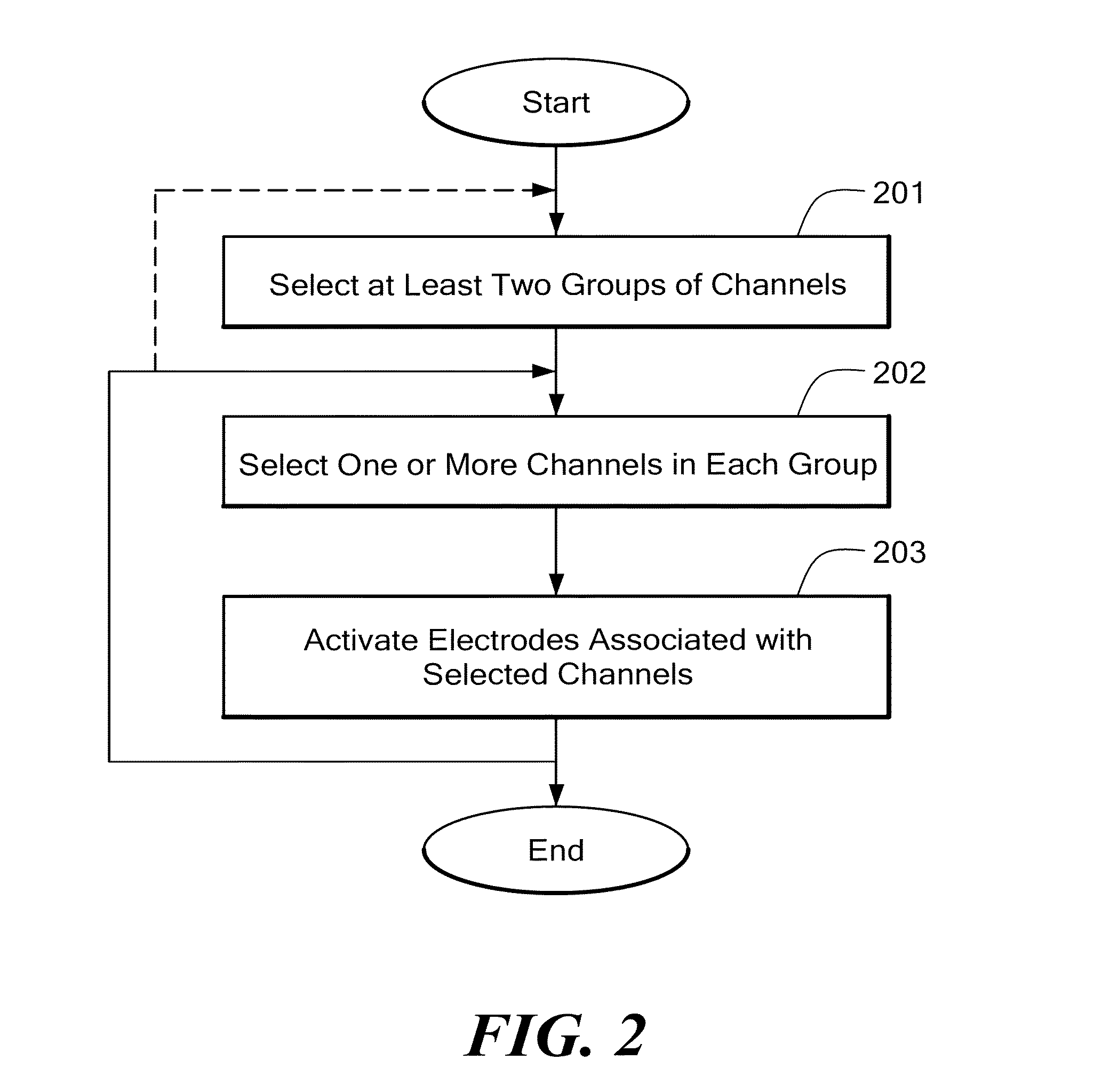Cochlear Implant Stimulation with Low Frequency Channel Privilege
a cochlear implant and channel privilege technology, applied in the direction of external electrodes, ear treatment, sensors, etc., can solve the problems of limited current amplitude, inability to arbitrarily choose phase duration, and inability to stimulate cochlear implants
- Summary
- Abstract
- Description
- Claims
- Application Information
AI Technical Summary
Benefits of technology
Problems solved by technology
Method used
Image
Examples
example 1 (
Prior Art—“Conventional CIS”)
[0036]For Example 1, selected stimulation groups in a conventional CIS system are shown in FIG. 3 (Prior Art). One CIS-stimulation cycle includes 12 selected stimulation groups 30. Each selected stimulation group 30 is composed of one band pass channel. Since only one band pass signal channel is present, it is itself the maximum (trivial case). Thus, this setting represents standard 12-channel CIS. The cycle repetition rate is R / 12.
example 2 (
Prior Art—“N-of-M”)
[0037]For Example 2, one stimulation cycle using an N-of-M strategy contains only one selected stimulation group 40, which is composed of all 12 band pass signal channels, as shown in FIG. 4 (Prior Art). The six band pass signal channels with maximum energy are selected. Thus, this setting represents a conventional 6-of-12 setting. The cycle repetition rate is R / 6, which is an enhancement by a factor of 2 as compared to Example 1.
example 3
[0038]For Example 3, one stimulation cycle contains six selected stimulation groups 50, as shown in FIG. 5 in accordance with an embodiment of the invention. Each selected stimulation group includes two associated band pass signal channels, and the channel with the greatest amplitude is selected. “CH(i)” represents the signals feature that is chosen as a selection criteria of the band pass signal channel numbered “i”. Traditionally, though not necessarily, this is the signal amplitude. A more advanced processing approach could use a linear combination of multiple signals features, e.g. amplitude and SNR:
a(i)*amp(i)+b(i)*SNR(i),
where amp(i) is the signal amplitude in channel “i”, SNR(i) is the signal-to-noise ratio in that channel, and a(i) and b(i) are channel specific constants, derived, for example, during fitting of the implant user. “1S” denotes that 1 channel out of the stimulation group is selected, and the selected channel is stimulated in sequential stimulation mode. If more...
PUM
 Login to View More
Login to View More Abstract
Description
Claims
Application Information
 Login to View More
Login to View More - R&D
- Intellectual Property
- Life Sciences
- Materials
- Tech Scout
- Unparalleled Data Quality
- Higher Quality Content
- 60% Fewer Hallucinations
Browse by: Latest US Patents, China's latest patents, Technical Efficacy Thesaurus, Application Domain, Technology Topic, Popular Technical Reports.
© 2025 PatSnap. All rights reserved.Legal|Privacy policy|Modern Slavery Act Transparency Statement|Sitemap|About US| Contact US: help@patsnap.com



